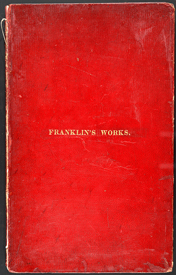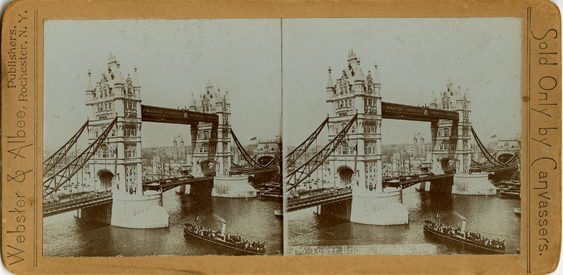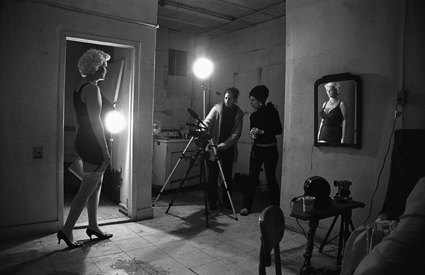Scardino, Scott, Shakespeare, Shelley, Sinatra, &c.
sS
WHAT: S
WHEN: Pre-1900
WHO: The Un-Gyve Limited Group
WHERE: Boston
SCARDINO: In the 1900s Sicilian born Mario Scardino is New England’s leading independent bootlegger, operating stills throughout the Boston area, supplying and distributing for the Kennedy family, and running a Boston speakeasy. After prohibition he takes over the old Del Rio restaurant and opens the famed Red Carpet in Quincy with Geraldine DiBona Scardino.
SCOTT: Sir Walter Scott, Abbotsford. Views of the Haunts and Homes of the British Poets, Oct. 19 1850.
SCOTT: Scott’s Tomb, Dryburgh Abbey. Views of the Haunts and Homes of the British Poets, Oct. 19 1850.
SHAKESPEARE: William Shakespeare, Birthplace, Exterior view. Views of the Haunts and Homes of the British Poets, Oct. 19 1850.
SHAKESPEARE: Interior of the Room, in which Shakespeare was born. Views of the Haunts and Homes of the British Poets, Oct. 19 1850.
SHAKESPEARE: New Place — the Residence of Shakespeare. Views of the Haunts and Homes of the British Poets, Oct. 19 1850.
SHELLEY: Percy Bysshe Shelley, Shelley’s Body found near via Reggio. Views of the Haunts and Homes of the British Poets, Oct. 19 1850.
SHENSTONE: William Shenstone, Leasowes. Views of the Haunts and Homes of the British Poets, Oct. 19 1850.
SHOOT THE ARROW: A PORTRAIT OF THE WORLD FAMOUS *BOB*: Amy Touchette
“So I did what queens do — I just snapped and walked away.”
What queens do, the kinds of queens she refers to, is (in the ordinary way) present themselves, their naturally born male selves, as women, mostly flamboyantly — the boy being key — often publicly and sometimes on the stage. But she is no ordinary queen.
The impulse to avert our eyes from this extraordinary photographic portrait — aversion arisen primarily though not solely from a sense of preservation in need, preservation of privacy, ours and hers — is an impulse outweighed by the compulsion toward empathy. Empathy in the truest sense, though none of us, not even the genuine queens, can genuinely empathise.
Shoot the Arrow is a collection of Amy Touchette’s intimate black-and-white photographs of the onstage and offstage life of celebrated New York City burlesque dancer The World Famous *BOB*. A central figure in today’s “neo-burlesque” movement, the self-described “female-female impersonator” is known for her over-the-top blonde bombshell image. Touchette used 24-hour photo sessions and exclusive access to The World Famous *BOB*’s private life to produce a deep, unique, and moving photographic biography of a woman pursuing dreams of glamour and fame. Photographed strictly on 35mm film, Touchette’s pictures of The World Famous *BOB* on stage, backstage, in her daily life, and during private moments at home, are rich and beautifully real. Also containing the words of The World Famous *BOB* — plain-spoken words that appear on the page as purely extracted un-distracted and un-distracting prose — giving account of her gender evolution from an isolated farm girl in the California Valley, to a rebellious runaway taken under the wing of San Francisco’s drag queen community, to her current incarnation as “spiritual transsexual” performer in New York City’s burlesque revival, Shoot the Arrow is an unusually penetrating and authentic portrait of contemporary life.
SINATRA: From our Un-Gyve archives, Ol' Blue Eyes is Back, Dominic DiBona's original programme book for the Emmy nominated television show that followed Frank Sinatra's 1973 comeback album of the same name. Printed on the orange cloth cover, ol' blue eyes is back above an image of the famous eyes and below that Dominic DiBona. Inside the book are lyrics to all the songs performed along with stage directions.
SIXTEEN POEMS by Roger Lonsdale: The Roger Lonsdale archive, at Balliol College, Oxford, includes his reflections, in 2005, on his poetry, with lists of his ninety poems—alphabetically by first lines, and chronologically—as well as his notebooks as a poet; and, at that time, he noted, in reference to these sixteen poems from Un-Gyve Press in a numbered, limited edition of seventy-five: “At present the following seem worth preserving for one reason or another.”
SOME COMPLICITY: SELECTED POEMS AND TRANSLATIONS by Harry Thomas — Harry Thomas is the translator of Joseph Brodsky’s masterpiece, “Gorbunov and Gorchakov” (To Urania, Penguin, 1987). He is the editor of Selected Poems of Thomas Hardy (Penguin, 1993), Montale in English (Penguin, 2002) and Poems about Trees (Knopf, 2019). His poems, translations, essays, and reviews have appeared in dozens of magazines. He is former Editor-in-Chief of Handsel Books, an imprint of Other Press as well as an affiliate of W. W. Norton. Some Complicity: Poems & Translations by Harry Thomas from Un-Gyve Press (2103). Also from Harry Thomas and Un-Gyve Press: The Truth of Two Selected Translations (2017) and HAIKU (2020)
SOUTHEY: Robert Southey, Residence at Keswick. Views of the Haunts and Homes of the British Poets, Oct. 19 1850.
SPENSER: Edmund Spenser, Kilcolman Castle on fire. Views of the Haunts and Homes of the British Poets, Oct. 19 1850.
STEREOSCOPIC: Given the illusion of depth and solidity by two photographs of the same object taken at slightly different angles and viewed simultaneously through a stereoscope. When two offset images are presented in split view to the left and right eye of the viewer these two-dimensional images are merged by the brain giving the perception of three-dimensional depth. Underwood & Underwood were pioneering producers of stereoscopic images. Webster & Albee, a company based out of Rochester, New York, produced a variety of stereoview cards to be sold by canvassing agents.
SUBSCRIPTION BOOK AGENT: Peddlers and presellers by use of canvassing books and outfits the tools of the Un-Gyve Subscription Book Agent — prospectuses, specimen books, salemen's dummies, and additional accoutrements of the trade. AGENTS WANTED.
SUBSCRIPTION PUBLISHING: Along with seventeenth century atlases, geographies, and histories, notably Bible histories, significant works of English literature published by subscription include the first illustrated edition of Milton's Paradise Lost, published by Jacob Tonson of London in 1688 to which over five hundred prominent patrons subscribed. In the eighteenth century, subscription publishing extended to popular works such as the Fanny Burney novel Camilla, which lists the Duchess of York, Jane Austen, Edmund Burke, Maria Edgeworth, and David Hume in the thirty-eight pages of subscribers as published in 1796. The practice further extended to the colonies, where such works as Samuel Willard's A Compleat Body of Divinity published in Boston, 1726, by the patronage of Benjamin Franklin's father, Josiah, and his brother James among its subscribers. Another subscription publication associated with Franklin, The Works of Benjamin Franklin ... with Notes and a Life of the Author by Jared Sparks, Hilliard Gray, Boston, 1840, solicited subscribers with the support of an illustrated canvassing book sans text. Upon the success of The Innocents Abroad published in 1869, Mark Twain was soon a staunch supporter of the system. "Anything but subscription publication," he once put in writing to William Dean Howells, "is printing for private circulation."
SWIFT: Jonathan, Dean Swift, Laracor Church. Views of the Haunts and Homes of the British Poets, Oct. 19 1850.
SWIFT: Stella’s Cottage. Views of the Haunts and Homes of the British Poets, Oct. 19 1850.
SWIFT: Ruins of Swift’s House. Views of the Haunts and Homes of the British Poets, Oct. 19 1850.
N.B. The alphabet swatch colour is Sindoor from the Un-Gyve Palette.




